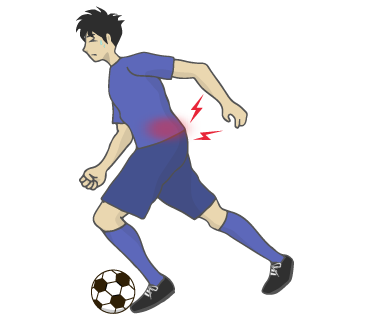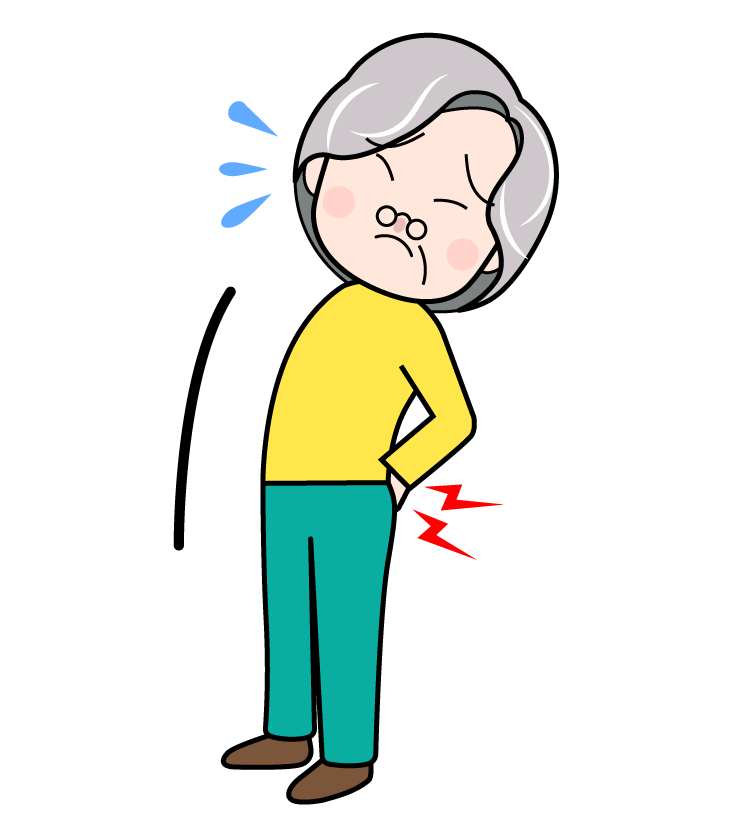Column The Daily Movements and Exercises That You Should NEVER Do if You Have Lumbar Spondylolisthesis
November 02, 2023
Lumbar spondylolisthesis is a condition in which the vertebrae in the lumbar region move out of their normal position. Spondylolisthesis is the second most common condition after herniated disc and spinal canal stenosis. *1

*Reference No 1: Yutaka Nohara et al., “Nationwide survey on complications of spine surgery in Japan” Journal of the Japanese Society for Spine Surgery and Related Research, 15 (2), 2004.
Nationwide_Survey_on_Complications_of_Spine_Surgery_in_Japan (in English)
Spondylolisthesis causes symptoms such as back pain, pain and numbness in the buttocks and lower limbs. In addition, intermittent claudication (a symptom of pain that appears during walking and prevents the patient from walking, but subsides after a rest) is also one of the typical symptoms of spondylolisthesis.
These symptoms of spondylolisthesis can often be exacerbated by certain activities of everyday life.
In this article, we will discuss what you should never do if you suffer from spondylolisthesis.
What to avoid at all costs if you have lumbar spondylolisthesis
There are two main activities that should never be performed if you have lumbar spondylolisthesis.
Strenuous exercise
Strenuous exercise is one of the causes of lumbar spondylolisthesis, and it can also lead to a further worsening of the symptoms.
Strenuous exercise (i.e. sports), accelerates the degeneration of tissues such as discs and ligaments, causing the vertebrae to become unstable and come in contact against each other.
If you continue to play sports or other activities with an unstable spine, the degeneration will further progress and the pain and numbness will certainly worsen.
If you have been diagnosed with spondylolisthesis, it is best to avoid physical activities altogether, especially soccer and basketball.

Activities that involve bending at the waist
In the case of lumbar spondylolisthesis, any movement that involves bending over at the waist is also potentially risky.
Most cases of lumbar spondylolisthesis are anterior slips, in which the vertebra has shifted forward. When this happens, the spinal canal behind the vertebrae is further narrowed with any bending of the waist. This in turn compresses the nerves in the spinal canal, which tends to worsen the symptoms.
If you have been diagnosed with lumbar spondylolisthesis, you should avoid any movements that contorts the waist in everyday life, and also avoid stretching that may contort the lower back.

Forced twisting motions of the lower back
Twisting motions of the lower back are usually considered to cause little or no lumbar spine rotation movement.
However, in the case of lumbar spondylolisthesis, since the vertebrae are unstable in relation to each other, twisting at the waist is likely to narrow the spinal canal and compress the nerves, which can also intensify the symptoms.
In addition to stretching, it is advisable to avoid forcibly twisting one’s waist as much as possible in daily life.
Yoga and Pilates, which involve bending and twisting the hips, should also be avoided at all costs by persons with spondylolisthesis.

Staying in the same posture for a long time
Staying in the same position for long periods of time puts a great deal of strain on the lower back. When working at a desk, people tend to sit for long periods of time to concentrate on their work. If your posture is poor, your lower back will be under additional strain.
Also, in cases where back pain is severe, even though rest may be necessary, a prolonged rest can also lead to a decline in physical strength.
That is why you should avoid prolonged periods of time in the same position, whether sitting or lying down.
Movements involving lifting heavy objects
Lifting and holding heavy objects is one of the most straining activities for the lower back. If you perform such movements with a spondylolisthesis, deformation of the bones and joints will progress even further, and symptoms will worsen.

Treatment of lumbar spondylolisthesis
Once a patient is diagnosed with spondylolisthesis, the first step in treatment is conservative therapy, and if the symptoms fail to improve with conservative therapy and become chronic, surgery is then suggested. During surgery, part of the vertebral body such as the vertebral arch is removed, the spinal canal is widened, and the unstable vertebral body is fixed with screws or other means.
Our Treatment – the Cellgel Method
At our clinic, we perform the Cellgel method for spondylolisthesis that are caused by the degeneration of the intervertebral discs.
Recent research indicates that disc degeneration is one of the causing factors of spondylolisthesis. *2
That is why we believe that prevention of spondylolisthesis cannot be achieved without first repairing degenerated intervertebral discs.
*Reference No 2: I. Akkawi, H. Zmerly. Degenerative Spondylolisthesis: A Narrative Review. Acta Biomedica, vol. 92, No. 6, 2021.
With the Cellgel method, we inject a gel-like agent into the degenerated discs to repair them. The volume of the discs are not reduced but are instead preserved, thus preventing the progression of the misalignment of the spine that is the cause of spondylolisthesis.
Unlike conventional surgery, this treatment does not involve incisions, so there are fewer postoperative risks.
If you have been diagnosed with spondylolisthesis in the past, or suffer from back pain, please consider taking a consultation at our clinic.



